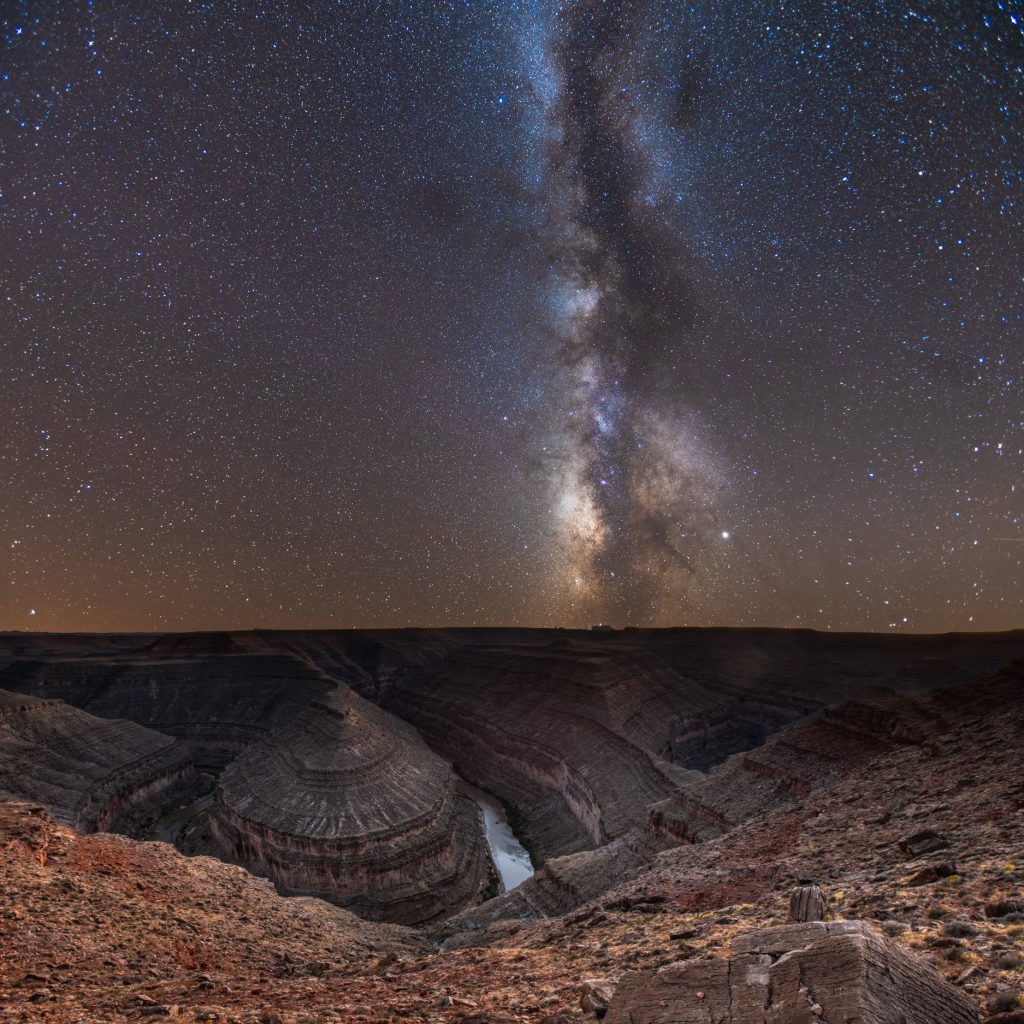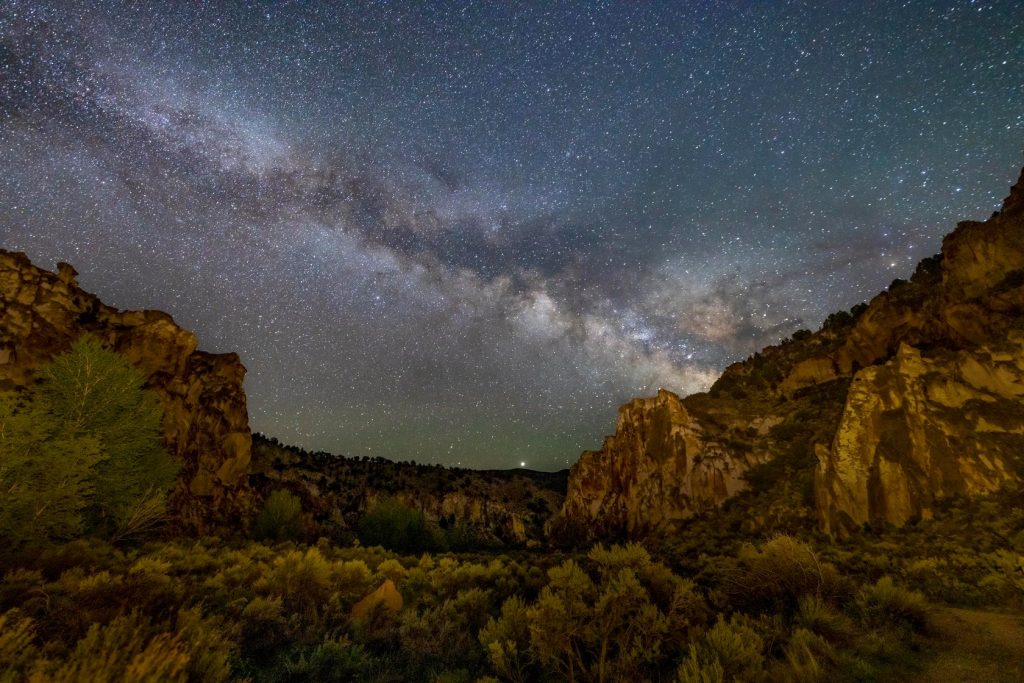Fremont Indian & Goosenecks State Parks Receive International Dark Sky Park Designations
SALT LAKE CITY — The International Dark Sky Association (IDA) has awarded International Dark Sky Park designations to Fremont Indian and Goosenecks State Parks. Both parks have exceptionally dark skies in beautiful and unique settings. These parks bring the total dark sky designations to ten within the Utah Division of State Parks system. This is more designations than any other state park system in the world.
Goosenecks State Park offers a 1,000-foot vertical view of 300 million years of Earth’s geological history and a 360-degree vista of the heavens. The park’s most famous feature has been its view of the tightly wound entrenched meander the San Juan River carved out over eons.
In recent years, however, Goosenecks’ night skies have rivaled its sensational geological formations as the reason people come to stay at the park. People from around the world travel to this remote park to be able to isolate and immerse themselves in its terrestrial and celestial magnificence.
Fremont Indian State Park is located deep within Clear Creek Canyon. The canyon and surrounding mountains serve as extremely effective light pollution buffers for the area. The park overlays and interprets Five Finger Ridge, the largest Fremont Indian settlement yet discovered. The ancient inhabitants, who lived in the area from about 400 A.D. to 1350 A.D, carved and painted thousands of intricate images on the canyon walls.
Many of these panels portray celestial bodies and give evidence that the residents kept detailed records of their seasonal interactions with astronomical phenomena. Tourists who come to this park to observe its starry skies are carrying forward a tradition of over 1,500 years of communing with the cosmos at the site.
Staff at both parks have worked hard over the past five years to make people aware of the value of natural darkness. They have consistently monitored the quality of their night skies and held frequent dark sky education events.
Programs have been mostly in the virtual realm during the pandemic, but visitors can come and enjoy the dark skies on their own without any fancy equipment. Stargazing by eye gives the broadest view of the heavens and even a simple pair of binoculars can help give visitors a closer view of intriguing celestial objects.


If you found this blog entry interesting, please consider sharing it through your social network.